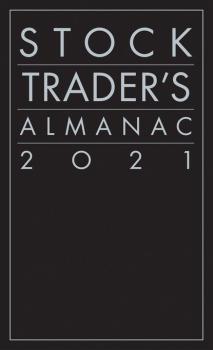John Wiley & Sons Limited
Все книги издательства John Wiley & Sons LimitedDistance Counseling and Supervision
*Requests for digital versions from ACA can be found on www.wiley.com. *To purchase print copies, please visit the ACA website here *Reproduction requests for material from books published by ACA should be directed to [email protected]
Go Legal Yourself!
Avoid legal pitfalls for your business from day one A common characteristic of entrepreneurs is the attitude: “I’m not going to do that until I absolutely have to.” And it’s understandable why: with limited time and resources it seems logical to focus on tasks like product development, production, marketing, and delivery—the ones that get your product or service out into the marketplace. The last thing you want to do is spend money and effort on legal issues, which is why they often drop to the bottom of the pile. But this can be a costly mistake—and Go Legal Yourself is here to make sure it’s one you avoid. Attorney, inventor, and businesswoman—named Top Woman Entrepreneur by LA Dreams Magazine in 2017—Kelly Bagla knows about doing business from both the entrepreneurial and legal sides of the fence. And in Go Legal Yourself, she guides you through the four key legal lifecycle phases every business experiences—and sets you up for worry-free success from day one. Establish yourself as the correct legal entity Gather and complete the relevant documentation Protect your brand Identify and avoid common (and expensive) pitfalls Plan and manage growth, enter new markets, and keep a sharp competitive edge Wherever you are with your business, this book is your guarantee you have all your legal ducks in a row—and that no nasty legal surprises stand between you and your target: success.
Position, Navigation, and Timing Technologies in the 21st Century
Covers the latest developments in PNT technologies, including integrated satellite navigation, sensor systems, and civil applications Featuring sixty-four chapters that are divided into six parts, this two-volume work provides comprehensive coverage of the state-of-the-art in satellite-based position, navigation, and timing (PNT) technologies and civilian applications. It also examines alternative navigation technologies based on other signals-of-opportunity and sensors and offers a comprehensive treatment on integrated PNT systems for consumer and commercial applications. Volume 1 of Position, Navigation, and Timing Technologies in the 21st Century: Integrated Satellite Navigation, Sensor Systems, and Civil Applications contains three parts and focuses on the satellite navigation systems, technologies, and engineering and scientific applications. It starts with a historical perspective of GPS development and other related PNT development. Current global and regional navigation satellite systems (GNSS and RNSS), their inter-operability, signal quality monitoring, satellite orbit and time synchronization, and ground- and satellite-based augmentation systems are examined. Recent progresses in satellite navigation receiver technologies and challenges for operations in multipath-rich urban environment, in handling spoofing and interference, and in ensuring PNT integrity are addressed. A section on satellite navigation for engineering and scientific applications finishes off the volume. Volume 2 of Position, Navigation, and Timing Technologies in the 21st Century: Integrated Satellite Navigation, Sensor Systems, and Civil Applications consists of three parts and addresses PNT using alternative signals and sensors and integrated PNT technologies for consumer and commercial applications. It looks at PNT using various radio signals-of-opportunity, atomic clock, optical, laser, magnetic field, celestial, MEMS and inertial sensors, as well as the concept of navigation from Low-Earth Orbiting (LEO) satellites. GNSS-INS integration, neuroscience of navigation, and animal navigation are also covered. The volume finishes off with a collection of work on contemporary PNT applications such as survey and mobile mapping, precision agriculture, wearable systems, automated driving, train control, commercial unmanned aircraft systems, aviation, and navigation in the unique Arctic environment. In addition, this text: Serves as a complete reference and handbook for professionals and students interested in the broad range of PNT subjects Includes chapters that focus on the latest developments in GNSS and other navigation sensors, techniques, and applications Illustrates interconnecting relationships between various types of technologies in order to assure more protected, tough, and accurate PNT Position, Navigation, and Timing Technologies in the 21st Century: Integrated Satellite Navigation, Sensor Systems, and Civil Applications will appeal to all industry professionals, researchers, and academics involved with the science, engineering, and applications of position, navigation, and timing technologies.pnt21book.com
Arc Flash Hazard Analysis and Mitigation
This new edition of the definitive arc flash reference guide, fully updated to align with the IEEE's updated hazard calculations An arc flash, an electrical breakdown of the resistance of air resulting in an electric arc, can cause substantial damage, fire, injury, or loss of life. Professionals involved in the design, operation, or maintenance of electric power systems require thorough and up-to-date knowledge of arc flash safety and prevention methods. Arc Flash Hazard Analysis and Mitigation is the most comprehensive reference guide available on all aspects of arc flash hazard calculations, protective current technologies, and worker safety in electrical environments. Detailed chapters cover protective relaying, unit protection systems, arc-resistant equipment, arc flash analyses in DC systems, and many more critical topics. Now in its second edition, this industry-standard resource contains fully revised material throughout, including a new chapter on calculation procedures conforming to the latest IEEE Guide 1584 . Updated methodology and equations are complemented by new practical examples and case studies. Expanded topics include risk assessment, electrode configuration, the impact of system grounding, electrical safety in workplaces, and short-circuit currents. Written by a leading authority with more than three decades' experience conducting power system analyses, this invaluable guide: Provides the latest methodologies for flash arc hazard analysis as well practical mitigation techniques, fully aligned with the updated IEEE Guide for Performing Arc-Flash Hazard Calculations Explores an inclusive range of current technologies and strategies for arc flash mitigation Covers calculations of short-circuits, protective relaying, and varied electrical system configurations in industrial power systems Addresses differential relays, arc flash sensing relays, protective relaying coordination, current transformer operation and saturation, and more Includes review questions and references at the end of each chapter Part of the market-leading IEEE Series on Power Engineering, the second edition of Arc Flash Hazard Analysis and Mitigation remains essential reading for all electrical engineers and consulting engineers.
Migration Studies and Colonialism
The history of migration is deeply entangled with colonialism. To this day, colonial logics continue to shape the dynamics of migration as well as the responses of states to those arriving at their borders. And yet migration studies has been surprisingly slow to engage with colonial histories in making sense of migratory phenomena today. This book starts from the premise that colonial histories should be central to migration studies and explores what it would mean to really take that seriously. To engage with this task, Lucy Mayblin and Joe Turner argue that scholars need not forge new theories but must learn from and be inspired by the wealth of literature that already exists across the world. Providing a range of inspiring and challenging perspectives on migration, the authors’ aim is to demonstrate what paying attention to colonialism, through using the tools offered by postcolonial, decolonial and related scholarship, can offer those studying international migration today. Offering a vital intervention in the field, this important book asks scholars and students of migration to explore the histories and continuities of colonialism in order to better understand the present.









